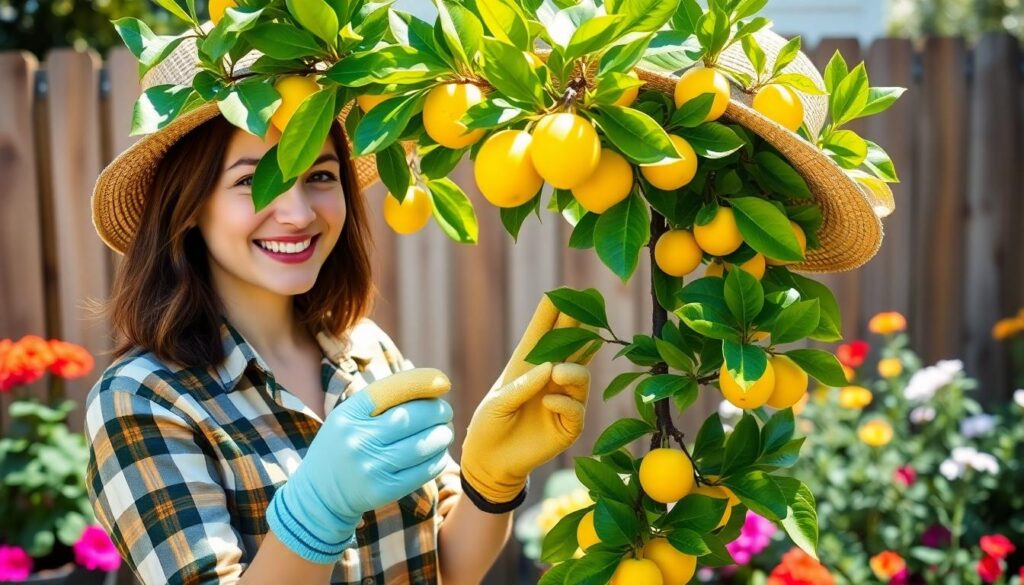Growing your own lemon tree isn’t just a rewarding hobby—it’s a fragrant journey that brings the sunshine of citrus right into your home. Imagine plucking fresh, juicy lemons from your very own tree whenever you need them for cooking, cleaning, or a refreshing beverage!
We’ve helped countless gardeners transform tiny seeds into thriving lemon trees that produce abundant fruit year after year. Whether you’re working with limited space in an apartment or have a spacious backyard, our proven techniques will guide you through every step of the process. From selecting the right variety to mastering watering schedules, we’ll show you how simple it can be to grow this versatile citrus tree in any environment.
Why Growing Your Own Lemon Tree Is Rewarding
Growing your own lemon tree offers many benefits that make it a worthwhile try for any gardener. Fresh lemons from your own tree taste significantly better than store-bought varieties, with more intense flavor and juiciness. You’ll enjoy the satisfaction of harvesting fruits that you’ve nurtured from seed or sapling to maturity.
Lemon trees also serve as beautiful ornamental plants, brightening your space with glossy green foliage and fragrant white blossoms before the fruits appear. Their citrusy scent naturally freshens your home or garden environment without artificial fragrances.
Economically speaking, having your own lemon tree can save money over time if you regularly use lemons in cooking or beverages. The trees actually require minimal maintenance once established, making them perfect for busy gardeners or beginners.
Health benefits abound with home-grown lemons, as they’re free from commercial pesticides and preservatives when grown organically. Nothing compares to the pride you’ll feel when serving dishes or drinks garnished with lemons from your own tree.
Creating a sustainable food source in your own living space promotes environmental responsibility while connecting you to the growing cycle. Many gardeners report therapeutic benefits from caring for lemon trees, as the routine maintenance provides stress relief and mindfulness opportunities.
Choosing the Right Lemon Variety for Your Climate
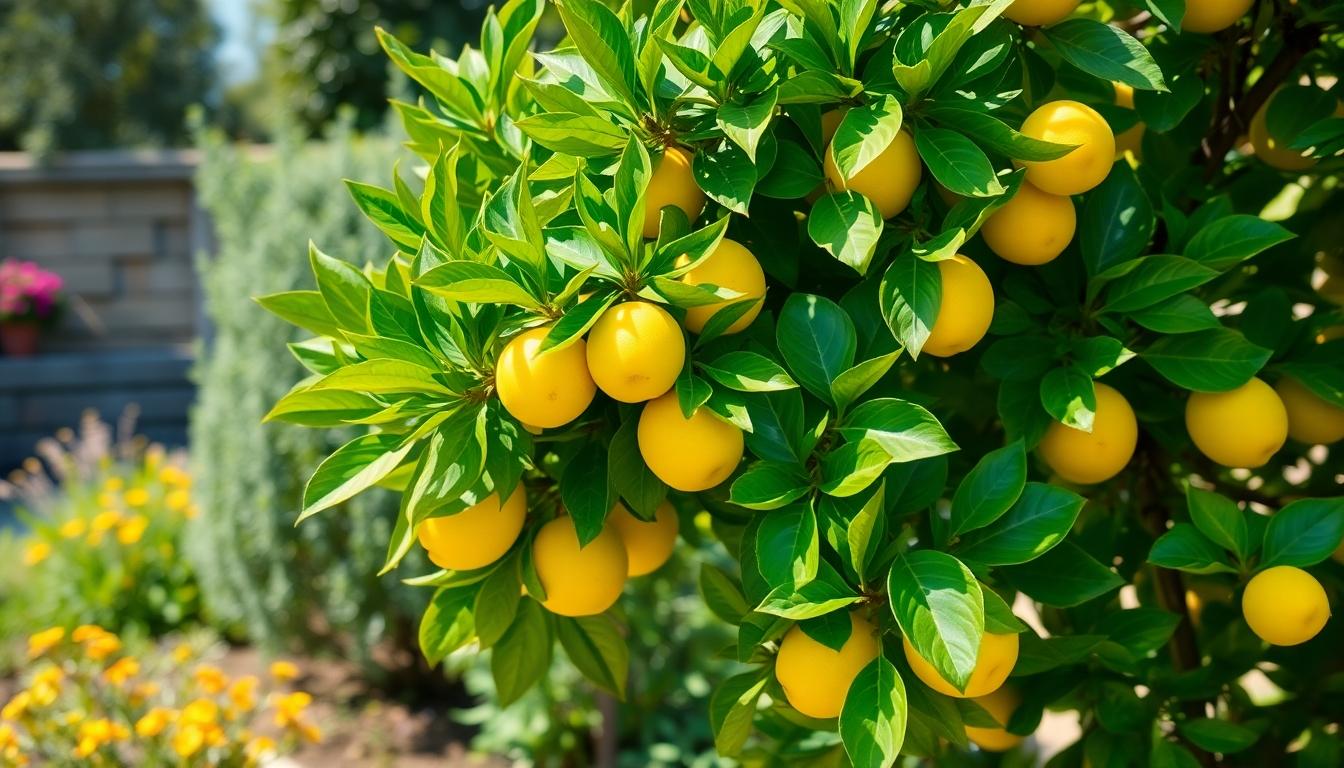
Selecting the appropriate lemon variety based on your local climate is essential for successful growth and abundant harvests. Let’s explore the most popular lemon varieties and their exact requirements to help you make an informed choice.
Meyer Lemons for Beginners
Meyer lemons stand out as the perfect choice for first-time citrus growers due to their remarkable adaptability and forgiving nature. These trees thrive in USDA zones 9-11 but adapt exceptionally well to container growing in cooler regions. Their impressive cold hardiness allows them to withstand temperatures down to 20°F for brief periods, making them more versatile than other varieties. Meyer lemons require 8-12 hours of daily sunlight to produce their signature sweet-tart fruits, which are less acidic than traditional lemons. The soil for Meyer lemons should be well-draining, preventing root rot issues that commonly plague citrus trees. Their compact growth habit makes them ideal for smaller spaces, while still delivering an impressive harvest of delicious fruits.
Eureka and Lisbon Varieties
Eureka and Lisbon lemons represent the classic commercial varieties that thrive in warm, sunny climates within USDA zones 9-10. Eureka trees offer several advantages for home growers, including their nearly thornless branches and ability to produce fruit year-round rather than seasonally. They perform exceptionally well in coastal climates and yield large, acidic fruits perfect for cooking and beverages. Lisbon trees, by comparison, demonstrate greater cold tolerance (down to 30°F) and drought resistance once established, making them suitable for regions with occasional temperature dips. Their thorny nature provides natural protection against pests and wildlife but requires careful handling during maintenance. Both varieties require full sun exposure to maximize fruit production and develop their characteristic bold citrus flavor.
Dwarf Varieties for Container Growing
Dwarf lemon varieties offer the perfect solution for gardeners with limited space or those living in cooler climates. Dwarf Meyer and Improved Meyer lead the category as top choices for container growing, reaching only 6-10 feet in height compared to their full-sized counterparts. Successful container cultivation requires pasteurized soil mixtures that provide excellent drainage while retaining adequate moisture. Containers must feature multiple drainage holes to prevent water accumulation that can damage roots. Annual repotting helps refresh the soil and provides space for continued root development as the tree matures. Regular pruning maintains an appropriate size for indoor or patio environments while encouraging better air circulation and fruit production. These compact trees deliver the same delicious fruits as standard varieties but in a more manageable form that can be moved indoors during harsh weather conditions.
Essential Supplies for Growing a Lemon Tree
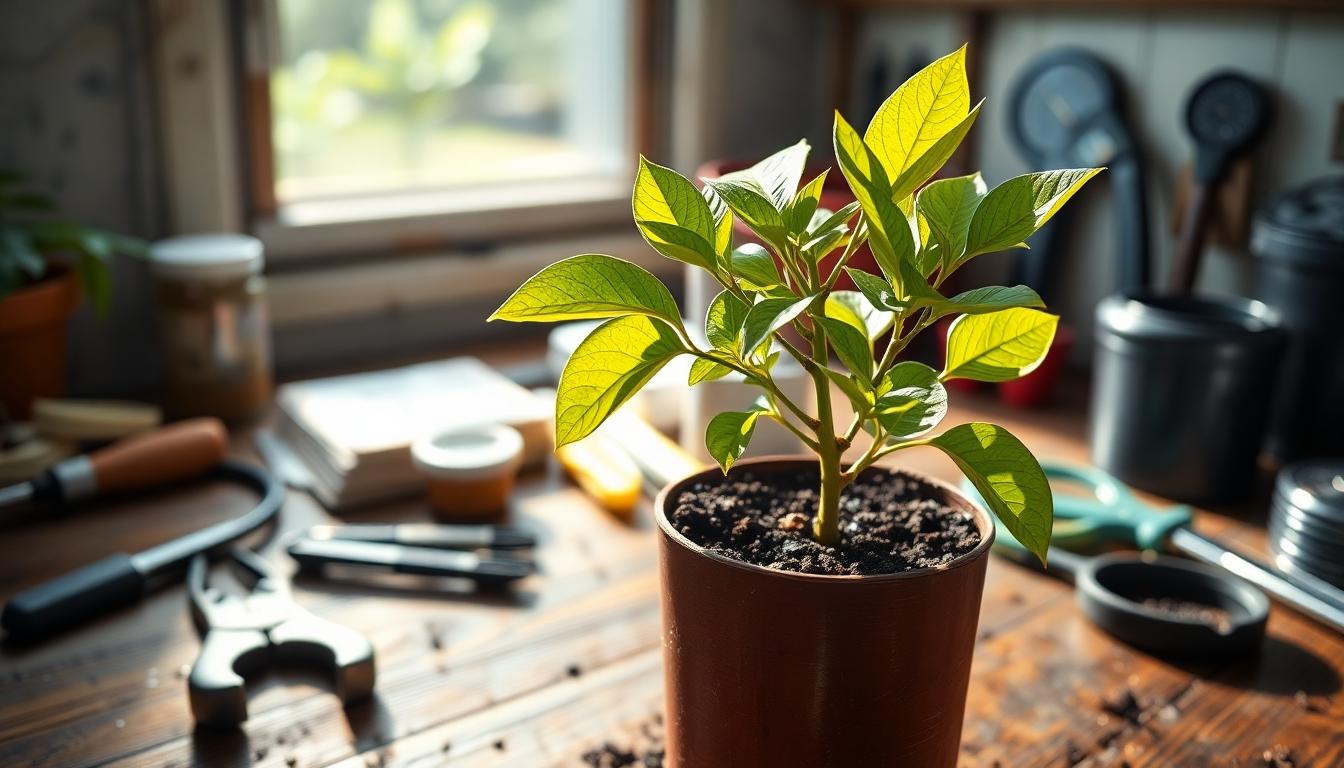
Starting your lemon tree journey requires gathering the right materials to ensure successful germination and growth. Here’s everything you’ll need to set yourself up for citrus success.
Soil and Container Requirements
Quality soil and proper containers form the foundation of a healthy lemon tree. Begin by planting seeds approximately ½-inch deep in pasteurized, well-draining potting mix that prevents disease and provides adequate aeration for developing roots. Select small pots (4-6 inches in diameter) with drainage holes for your initial planting stage, which provides enough space for seedlings while preventing excess moisture retention. As your lemon tree develops and grows, you’ll need to transfer it to progressively larger containers to accommodate its expanding root system. Remember that proper drainage is non-negotiable—waterlogged soil quickly leads to root rot and can kill your developing tree before it has a chance to thrive.
Fertilizer and Nutrient Needs
Lemon trees require exact nutrients to produce healthy foliage and eventually bear fruit. Apply a slow-release citrus-exact fertilizer during the active growing seasons of spring and summer when the tree utilizes nutrients most efficiently. We recommend following package instructions carefully, as over-fertilization can damage your tree’s delicate root system or cause leaf burn. Citrus fertilizers typically contain higher nitrogen ratios along with micronutrients like iron, zinc, and manganese that citrus trees specifically need. During fall and winter months, reduce fertilization as the tree’s growth naturally slows, resuming regular feeding when new growth appears in spring.
Tools and Equipment
Gathering the right tools makes lemon tree care more efficient and successful. For germination, prepare moist paper towels and plastic bags or Ziploc containers if you opt for pre-sprouting your seeds before planting. Sharp pruning shears become essential once your tree develops, allowing you to shape the canopy in spring and remove any damaged branches to improve airflow. Nail clippers can be helpful for carefully clipping seed coats if germination seems delayed. Ensure your growing location receives 8-12 hours of indirect sunlight daily, positioning your tree away from intense midday sun that can scorch tender leaves. A reliable thermometer helps maintain the ideal temperature of around 70°F for optimal germination and growth. Water measuring tools or moisture meters prevent overwatering, keeping soil consistently moist but never soggy.
Starting Your Lemon Tree from Seed vs. Buying a Sapling
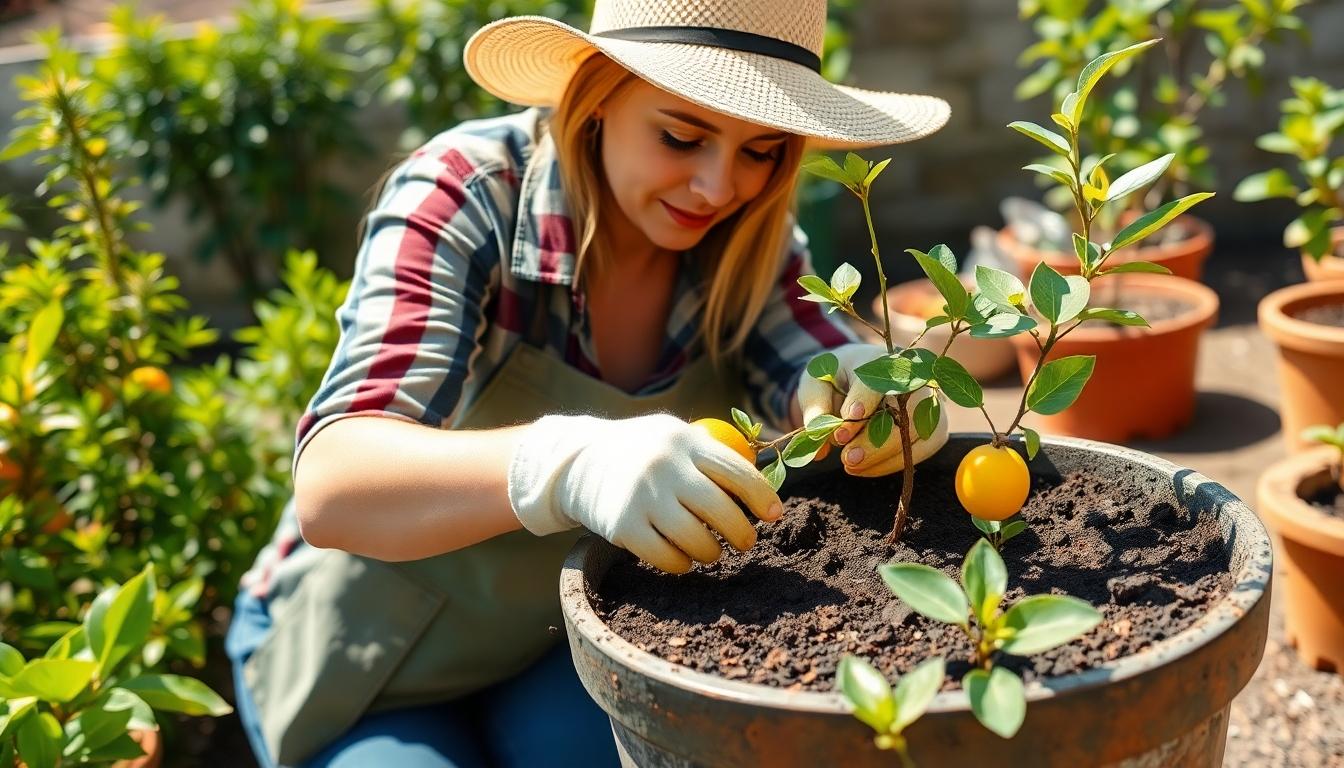
When embarking on your lemon tree journey, you’ll face an important first decision. Growing from seed offers a budget-friendly approach but requires 1-3 years of patience before fruiting, while purchasing saplings accelerates the process with fruit production possible within just 1-2 years.
The Seed Method: Step-by-Step Process
- Select quality seeds from ripe lemons, discarding any that float in water as these are typically nonviable.
- Prepare seeds properly by soaking them for 24 hours, which helps soften the outer coating and improves germination rates.
- Create a germination environment by wrapping your seeds in a damp paper towel, placing them in a sealed Ziploc bag, and keeping them at room temperature for 10-14 days until sprouts appear.
- Plant sprouted seeds in a well-draining potting mix approximately ½ inch deep, water thoroughly, and position in a location that receives ample sunlight for optimal growth.
- Provide consistent care by maintaining moist soil and ensuring your seedlings receive 6-8 hours of direct sunlight daily, transplanting them to larger containers as they outgrow their current homes.
Benefits of Starting with a Young Tree
- Enjoy faster harvests since saplings bypass the lengthy juvenile phase that seed-grown trees must progress through, putting fruit on your table years sooner.
- Guarantee fruit quality with grafted saplings that ensure consistent characteristics and superior disease resistance compared to the variable traits often seen in seed-grown trees.
- Reduce cultivation risks thanks to the established root systems of young trees, which provide greater resilience during the vulnerable early growth stages.
- Simplify the growing process for beginners who might feel intimidated by the germination and early seedling care requirements of the seed method.
- Make the most of limited growing seasons in regions with shorter warm periods, where saplings’ head start becomes particularly valuable for successful fruit production.
Perfect Environmental Conditions for Lemon Trees
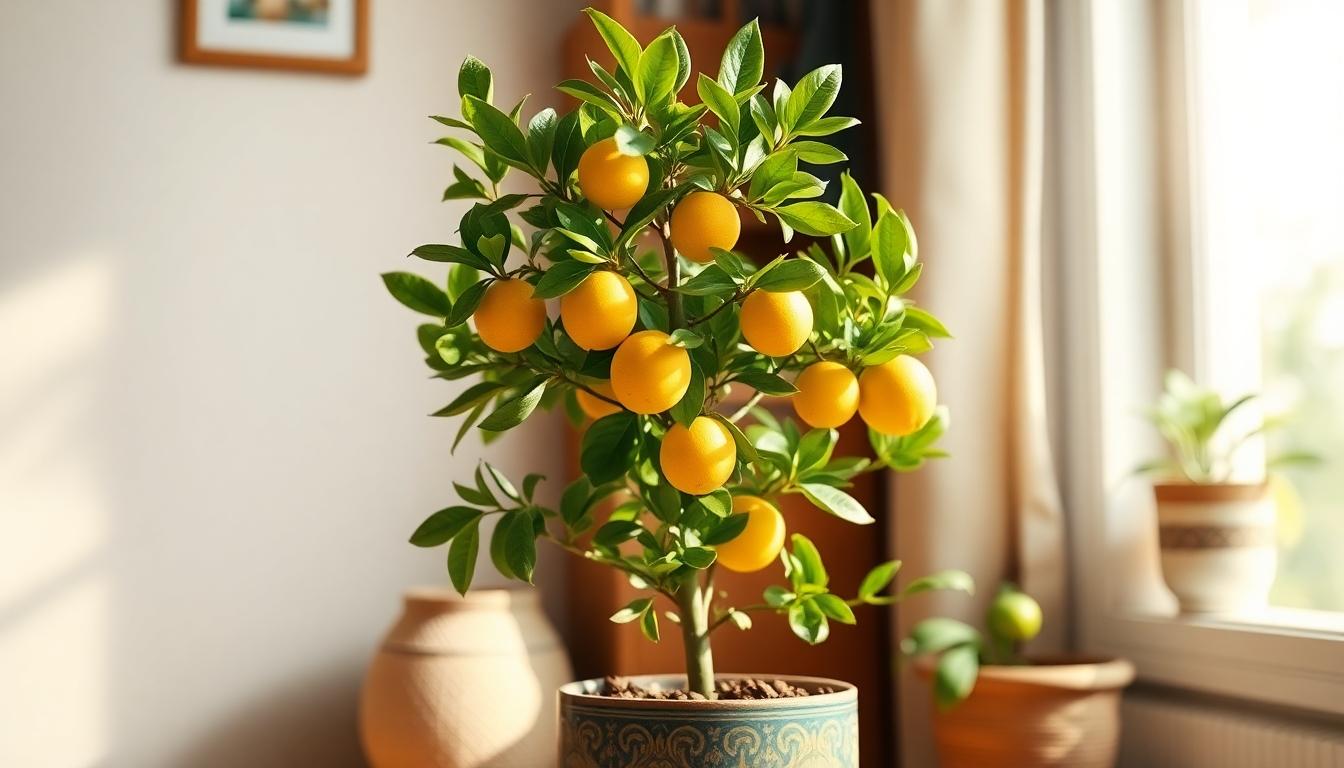
Creating the ideal environment for your lemon tree is essential for healthy growth and abundant fruit production. Let’s explore the exact conditions your citrus tree needs to thrive.
Temperature and Sunlight Requirements
Lemon trees flourish in temperatures between 65°F and 75°F (18°C to 24°C) during daylight hours. Nighttime temperatures should never drop below 55°F (13°C), as cold damage can significantly impact growth and fruit production. These tropical beauties require 8 to 12 hours of sunlight daily to produce the energy needed for flowering and fruiting. When growing seedlings, we recommend placing them in bright but indirect light to prevent leaf burn, gradually introducing them to more direct sunlight as they mature. For indoor lemon trees, a south-facing window typically provides optimal light exposure, though supplemental grow lights might be necessary during darker winter months.
Humidity and Air Circulation Needs
Maintaining proper humidity levels is crucial for lemon tree health, as these citrus plants naturally prefer moderately humid environments. Dry air can stress your tree and make it more susceptible to pest infestations, particularly spider mites that thrive in low humidity conditions. Good air circulation plays an equally important role in preventing fungal diseases that commonly affect citrus trees. Indoor growers should avoid placing lemon trees near heating vents or radiators that can create excessively dry conditions. Outdoor trees benefit from proper spacing that allows air to flow freely through the branches. Misting the leaves occasionally or using a humidity tray can help maintain appropriate moisture levels, especially when growing lemon trees indoors during winter months when heating systems typically reduce ambient humidity.
Indoor Lemon Tree Care Guidelines
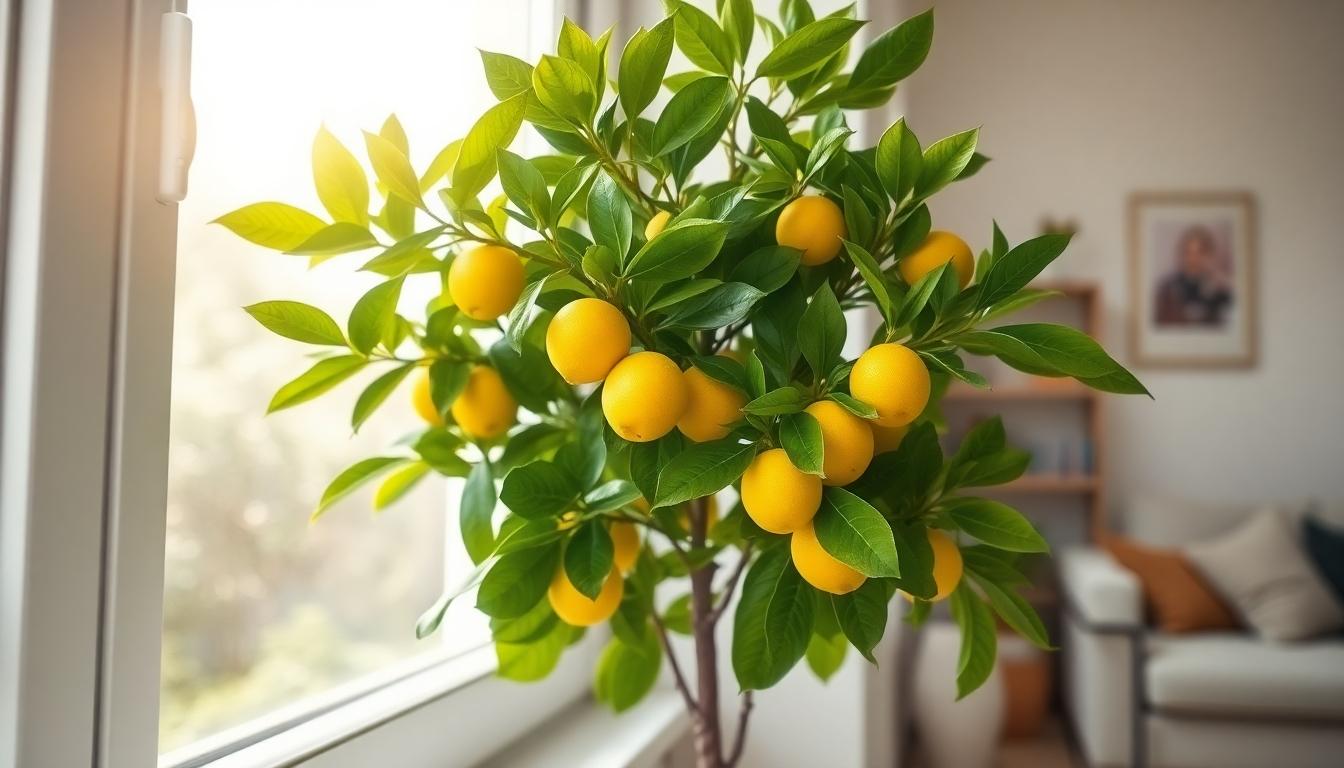
Growing a lemon tree indoors offers year-round access to this fragrant citrus plant regardless of your climate. With the right care routine, your indoor lemon tree can thrive and even produce fruit in a container setting.
Placement and Lighting Answers
Finding the perfect spot for your indoor lemon tree is crucial for its health and productivity. Lemon trees require approximately 8 hours of direct sunlight daily to reach their full potential, making south or southwest-facing windows the ideal location in your home. When natural light is insufficient, especially during winter months, we recommend supplementing with grow lights to maintain healthy growth patterns. Temperature control plays an equally important role in indoor citrus care, with lemon trees preferring consistent temperatures around 65°F (18°C) at night. Always position your tree away from heating vents, air conditioners, or drafty windows that could stress the plant with sudden temperature fluctuations.
Watering Schedule for Indoor Trees
Proper watering is fundamental to indoor lemon tree success and requires a consistent approach. Check your tree’s moisture level regularly by feeling the top two inches of soil—when this layer feels dry to the touch, it’s time to water. Most indoor lemon trees need watering about once weekly, though this frequency may increase during summer months or in drier indoor environments. When watering, ensure thorough saturation until water flows from the drainage holes, allowing the roots to access adequate moisture. Deep watering encourages stronger root development compared to frequent light sprinklings that only wet the surface soil. Always allow excess water to drain completely to prevent root rot, which can quickly damage your citrus tree.
Additional Care Tips
Monthly fertilization during spring and summer significantly boosts your lemon tree’s health and productivity. Select a citrus-exact fertilizer that provides the specialized nutrients these trees need for robust growth and fruit development. Regular pruning helps maintain an attractive shape while improving airflow through the branches—remove any dead or damaged limbs and thin out congested areas to promote better overall health. Indoor lemon trees typically require manual pollination since they lack natural pollinators like bees and wind that outdoor trees benefit from. Using a small paintbrush or cotton swab, gently transfer pollen between flowers by touching the center of each blossom to simulate natural pollination processes. This simple step dramatically increases your chances of enjoying homegrown lemons from your indoor tree.
Outdoor Lemon Tree Planting and Maintenance
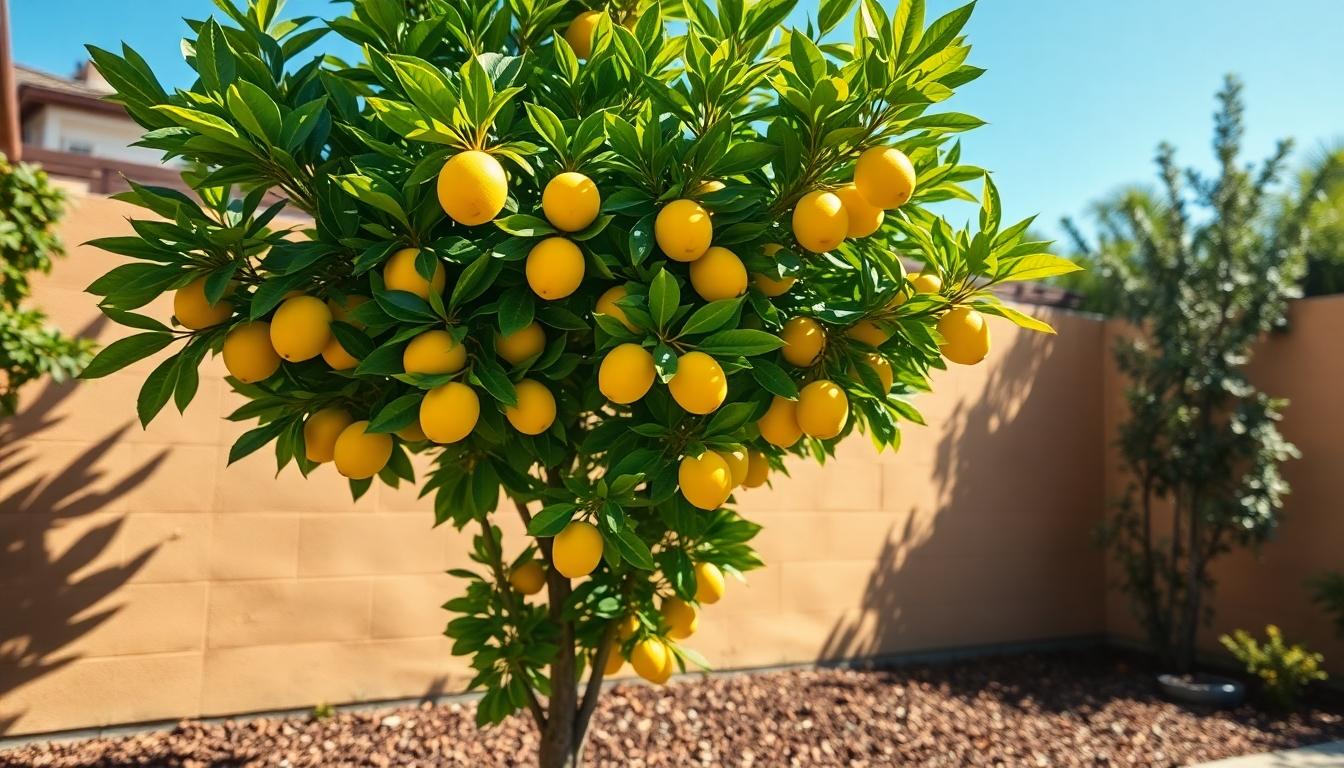
Taking your lemon tree outdoors requires careful consideration of environment and ongoing care. Let’s explore how to successfully plant and maintain your lemon tree in an outdoor setting.
Selecting the Ideal Planting Location
Climate plays a crucial role when growing lemon trees outdoors, as they thrive specifically in USDA zones 9 to 11 where warmth is consistent and frost is minimal. Your lemon tree needs full sun exposure to flourish, though in extremely hot regions, some protection from intense afternoon rays prevents leaf scorching. Well-draining soil is absolutely essential for outdoor lemon trees, as waterlogged roots quickly develop rot that can kill your tree. Consider positioning your tree against a south-facing wall that provides both warmth and protection from harsh winds. Spacing matters too—allow enough room for your lemon tree to reach its mature size without crowding, ensuring proper air circulation that prevents fungal issues.
Outdoor Planting Process
Start by preparing your lemon seeds immediately after rinsing them, as dried seeds significantly lose viability. Plant the seeds approximately 1/2-inch deep in a moist, pasteurized soil mix that provides optimal germination conditions. Choose containers with multiple drainage holes to prevent water accumulation that can suffocate young roots. Maintain soil moisture and a warm environment around 70°F during the germination period, which typically takes 1 to 3 weeks before you’ll see sprouts emerge. Transplant your seedlings once they’ve developed several sets of leaves, using the same high-quality pasteurized soil mix to minimize shock. Water thoroughly after planting to help establish root contact with the surrounding soil and eliminate air pockets that can dry out tender roots.
Seasonal Care Requirements
Spring marks the ideal time for pruning your lemon tree, removing dead branches and shaping the canopy to encourage abundant fruiting. Summer care focuses on consistent moisture and applying citrus-exact fertilizer that supplies the nutrients needed during this active growth period. Fall maintenance involves continuing regular watering schedules while reducing fertilizer applications as the tree prepares for its winter slowdown. Winter protection becomes essential even in warmer zones, so monitor forecasts for frost warnings and cover trees or provide heat sources when temperatures threaten to drop below freezing. Adjust your watering frequency during colder months, checking soil moisture before watering to prevent root rot in cooler, slower-drying conditions.
Additional Tips
Provide partial shade for newly planted trees in extremely sunny locations to prevent leaf scorch while they establish their root systems. Mulch around your tree (keeping it away from the trunk) helps retain moisture and regulate soil temperature throughout seasonal changes. Monitor for pests regularly, as outdoor trees face more exposure to insects that can damage leaves and developing fruit. Apply organic pest control methods early when you spot problems to prevent major infestations that can weaken your tree. Harvest mature fruits promptly to encourage continued production and prevent branch damage from overladen limbs that might break during storms or high winds.
Pruning and Training Your Lemon Tree
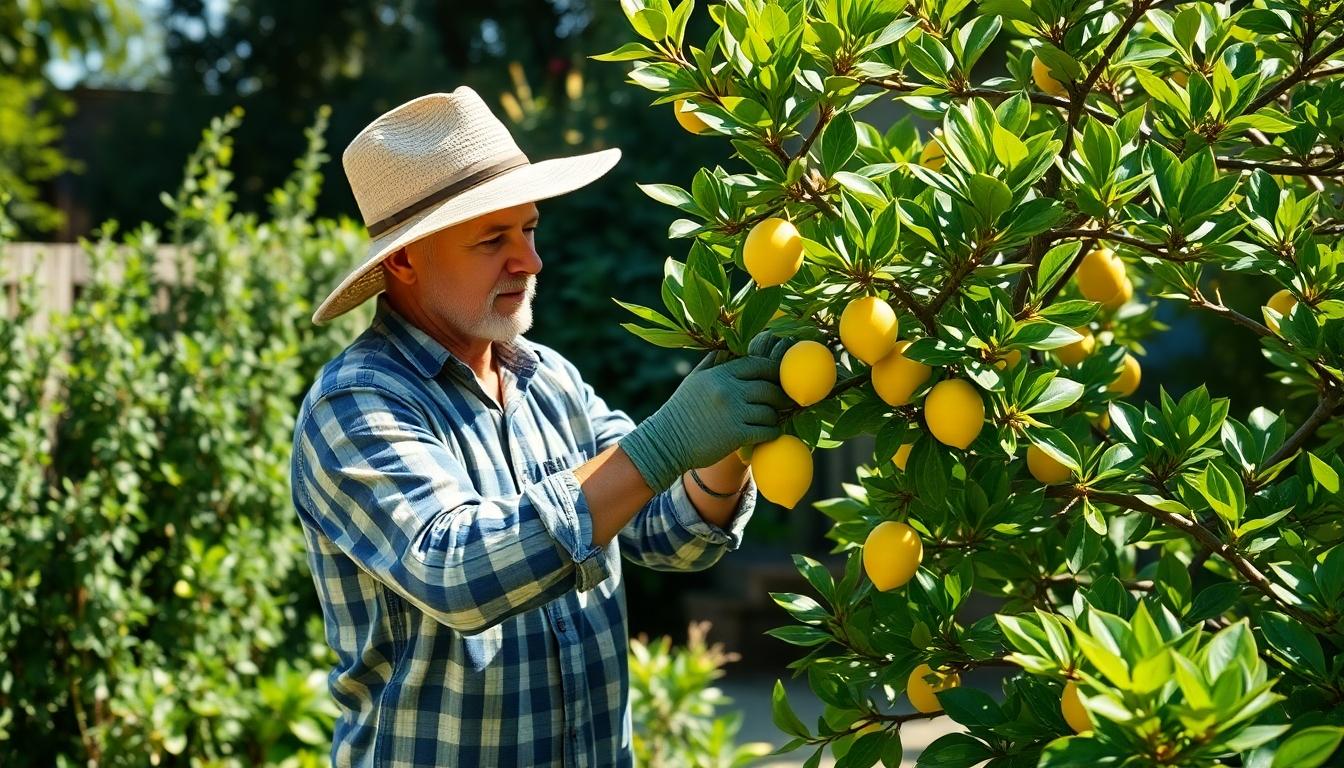
Proper pruning and training are essential aspects of lemon tree care that directly impact fruit production and overall tree health. We’ve compiled expert guidance to help you develop the skills needed for effective lemon tree maintenance.
When and How to Prune
Timing plays a crucial role in successful lemon tree pruning. Late winter or early spring, during the dormant season, provides the ideal window for pruning your lemon tree to promote healthy growth and abundant fruit production. Always use sharp, clean pruning tools to create clean cuts and prevent the spread of diseases between branches or trees. Dead or damaged branches should be removed completely, cutting them back to their point of origin on the main branch or trunk. Branches growing inward toward the center of the tree need removal to ensure proper air circulation and allow sunlight to reach all parts of the canopy. Regular pruning sessions help maintain your tree’s shape while encouraging new growth that will eventually bear fruit.
Shaping Techniques for Maximum Fruit Production
Developing a strong central leader creates the foundation for a productive lemon tree. This main vertical trunk supports the weight of fruit-bearing branches and helps maintain structural integrity during heavy fruiting periods. Maintain a balanced canopy by pruning branches that extend significantly farther than others, creating a more uniform appearance and even fruit distribution. Remove any branches that cross over each other as these create shade spots and potential rubbing injuries that can become entry points for diseases. Thin out some fruiting branches, especially in years of heavy fruit set, to prevent the tree from overproducing, which can lead to smaller fruits and strain the tree’s resources. Strategic pruning encourages the growth of new fruiting wood while maintaining adequate spacing between branches for optimal light penetration and air movement throughout the tree’s structure.
Troubleshooting Common Lemon Tree Problems
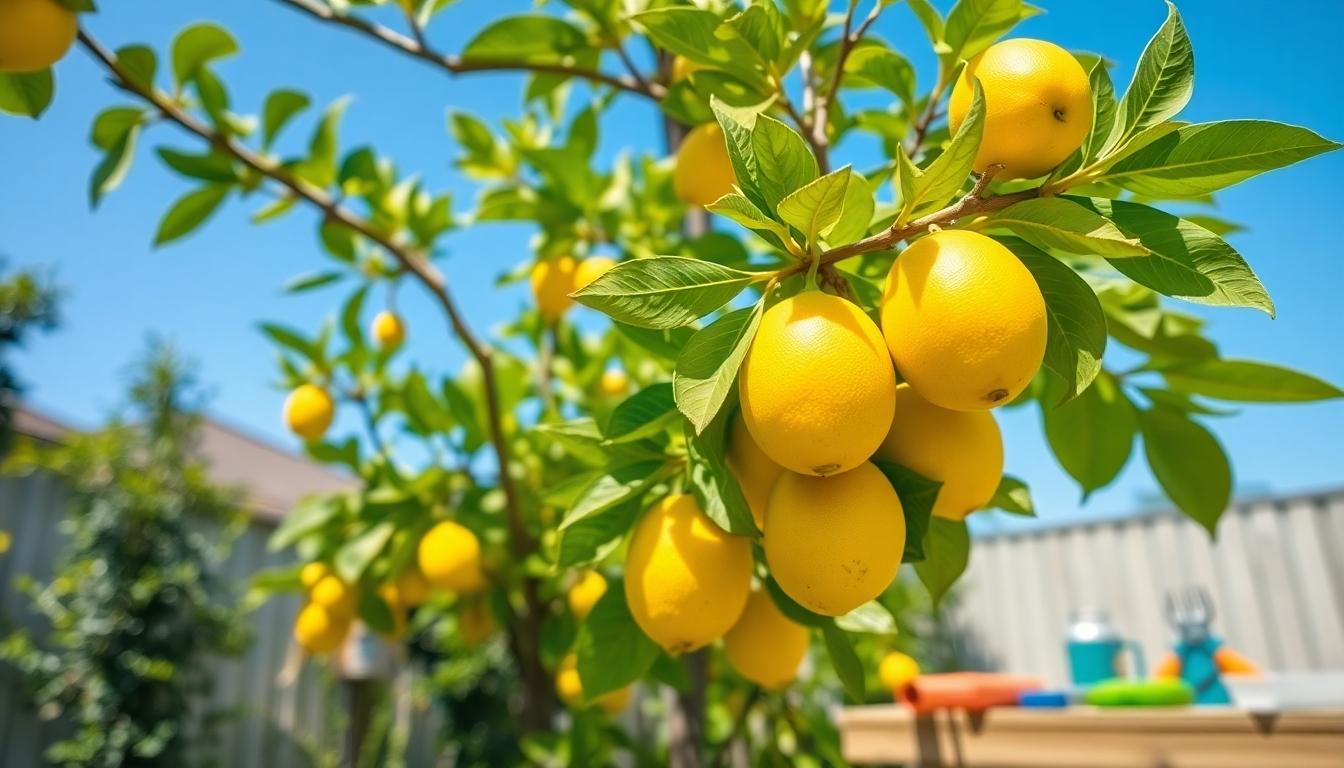
Even the most attentive gardeners face challenges when growing lemon trees. Identifying and addressing problems early can save your tree and ensure continued fruit production.
Pest Identification and Control
Spotting pests early is crucial for maintaining a healthy lemon tree. Aphids and spider mites frequently infest lemon trees, causing curled leaves and reduced vigor – apply neem oil or insecticidal soap at the first sign of these tiny invaders. Scale insects appear as small bumps on stems and leaves, requiring manual removal or treatment with horticultural oil for effective control. Citrus leaf miners create distinctive serpentine tunnels through leaves, damaging new growth; pruning affected leaves and using sticky traps can help manage these destructive pests. Regular inspection of your tree, especially on the undersides of leaves, will allow you to catch pest problems before they become severe.
Disease Prevention and Treatment
Preventing diseases is easier than curing them once they’ve taken hold. Root rot commonly occurs in overwatered lemon trees, so always ensure your pots have proper drainage holes and allow the soil to dry slightly between waterings. Citrus canker manifests as raised corky lesions on leaves, stems, and fruits; immediately remove infected branches and apply copper-based fungicides to prevent spread. Sooty mold appears as a black coating on leaves and stems, typically resulting from honeydew secreted by pests; controlling pest infestations effectively eliminates this unsightly fungus. Maintaining good air circulation around your tree and avoiding overhead watering can significantly reduce the risk of many common diseases.
Nutrient Deficiency Signs
Lemon trees communicate their nutritional needs through visible symptoms. Nitrogen deficiency shows up as pale yellow leaves and stunted growth, requiring application of a nitrogen-rich citrus fertilizer to restore vigor. Iron deficiency causes yellowing between leaf veins while the veins remain green, a condition called chlorosis that can be remedied with iron supplements or by adjusting soil pH. Magnesium deficiency creates distinctive yellow patches on older leaves while leaving young foliage unaffected, calling for applications of Epsom salts or magnesium-containing fertilizers. Regular soil testing helps identify deficiencies before they seriously impact your tree’s health, allowing you to adjust your fertilization program accordingly for optimal growth and fruit production.
Harvesting and Using Your Homegrown Lemons
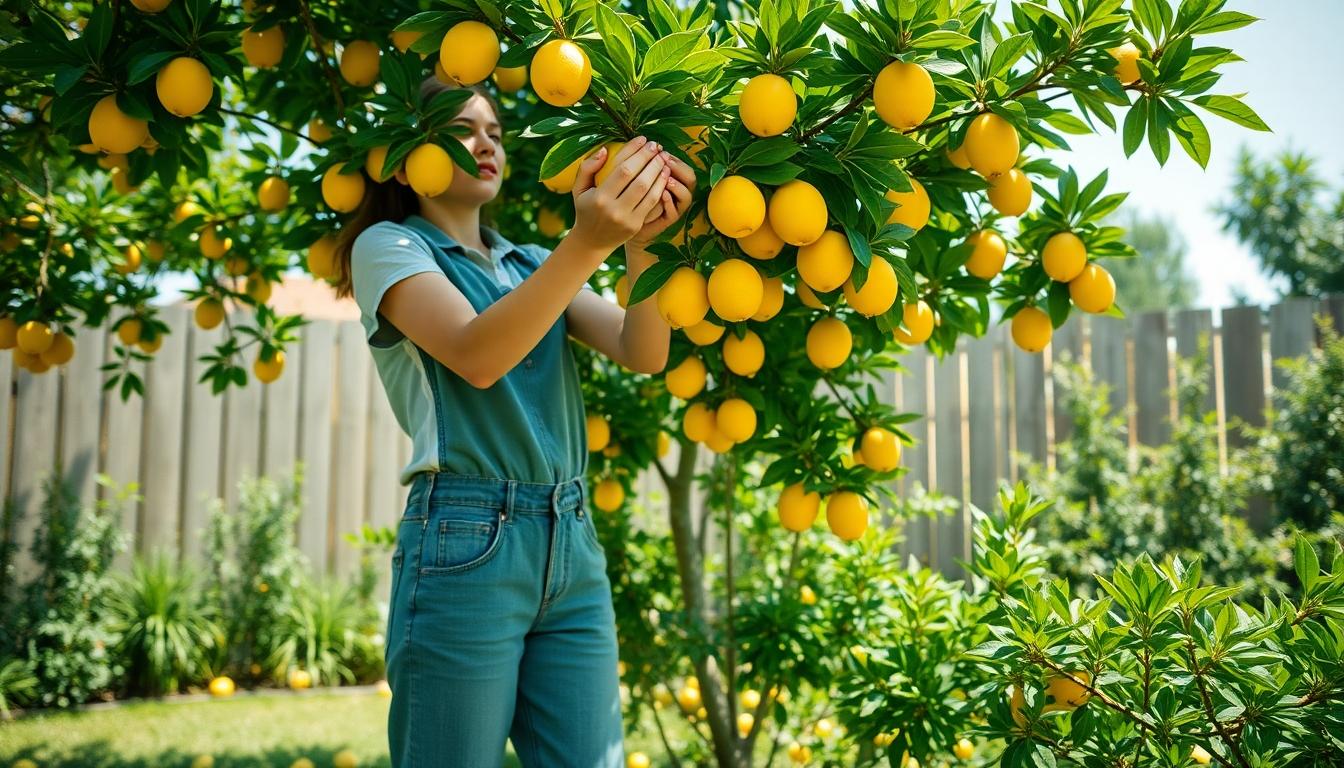
The true reward of growing your lemon tree comes when you can finally harvest and use the fruits of your labor. Let’s explore when to pick your lemons and the many ways you can enjoy them.
When Lemons Are Ready to Pick
Homegrown lemons typically require 6-9 months on the tree before they’re ready for harvesting. You’ll know they’re ripe when they develop a firm texture with a slight give when gently squeezed. The color should be uniformly bright yellow with no green patches remaining. Their skin will feel smooth and slightly glossy when ready for picking. We recommend harvesting in the morning when the essential oil content is highest, which enhances their flavor and aroma. Don’t rush to pick your lemons – allowing them to fully mature on the tree maximizes their juiciness and flavor profile.
Storage and Preservation Methods
Fresh lemons maintain their quality when stored in a cool, dry place away from direct sunlight. You can keep them at room temperature for about a week or extend their life to 3-4 weeks by storing them in the refrigerator. For longer preservation, lemon juice can be frozen in ice cube trays for up to 4 months, providing convenient portions for future use. Making homemade marmalade transforms your lemons into a delicious spread that lasts for months. Preserving lemons in salt creates a Middle Eastern condiment that adds incredible flavor to many dishes. Dehydrating lemon slices offers another storage option, creating versatile garnishes that can be rehydrated or used as decorative elements.
Culinary and Household Uses
Fresh lemon juice brightens the flavor of countless recipes from savory dishes to sweet desserts. Zest from your homegrown lemons contains intense citrus oils that add depth to baked goods, sauces, and marinades. Lemon-infused olive oil makes an excellent dressing for salads or finishing touch for grilled vegetables. Beyond the kitchen, our homegrown lemons serve as powerful natural cleaners – their juice can disinfect surfaces and remove stains due to its acidic properties. The oils in lemon peels make effective furniture polish when combined with olive oil. We’ve found that lemon juice acts as a natural bleaching agent for removing discoloration from cutting boards and countertops. The refreshing scent of lemons can eliminate odors throughout your home, making your homegrown harvest useful in virtually every room.
Propagating New Lemon Trees from Your Existing Plant
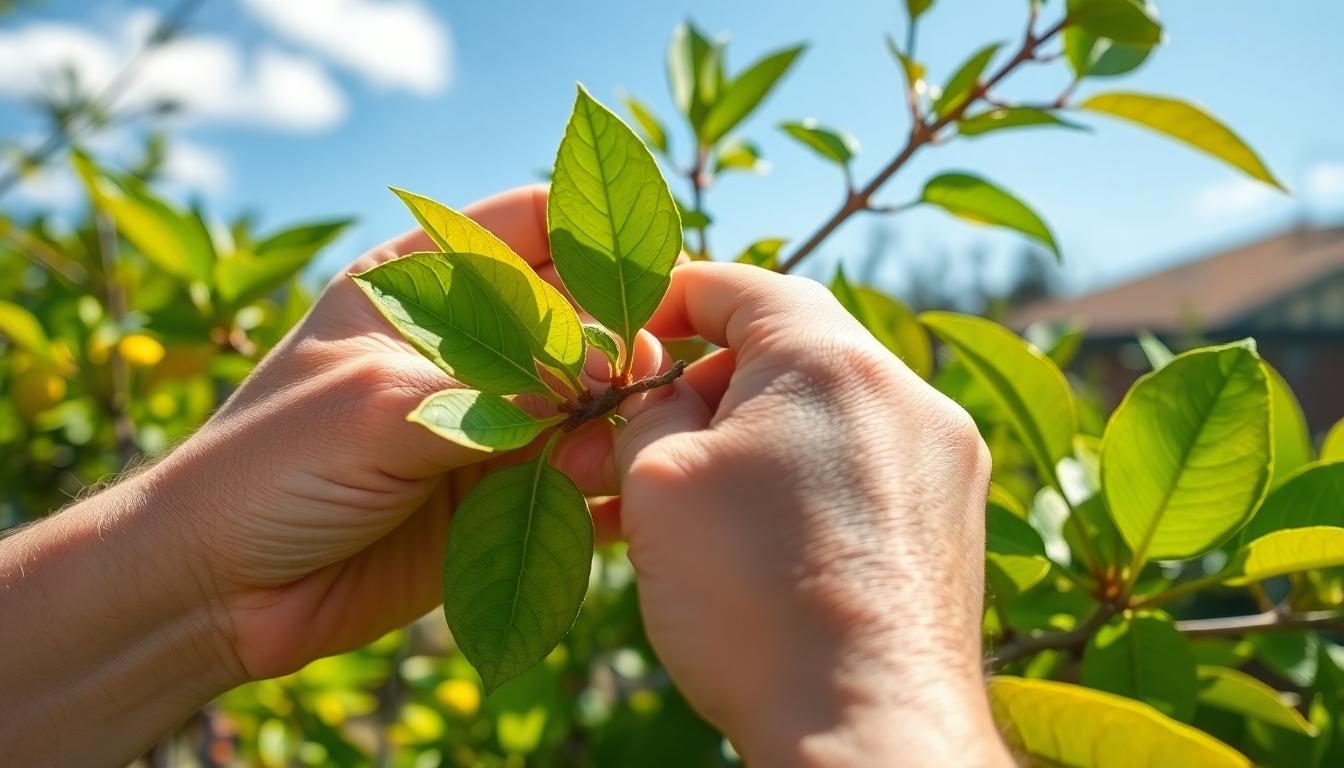
Propagating new lemon trees from an established plant can be more efficient than starting from seed. We’ve found that this method produces trees with desirable traits much sooner, allowing you to expand your citrus collection without purchasing new plants. Grafting is the most reliable technique for propagation, involving the joining of a stem from your existing tree (scion) to the root system of another plant (rootstock).
Grafting Techniques for Lemon Trees
Successful grafting begins with selecting healthy scions from your mature lemon tree. The process requires precise cutting of both the scion and rootstock to ensure they fit together perfectly. After joining these components, secure them with specialized grafting tape or clips to hold the union firmly in place. Maintaining warm, moist conditions around the graft is essential for proper healing and successful union formation.
Alternative Propagation Methods
Layering offers another effective way to propagate lemon trees without the complexity of grafting. This technique involves encouraging a low-growing branch to develop roots while still attached to the parent tree. Air layering works particularly well for citrus trees, where you wrap a branch section with moist sphagnum moss after making a small cut in the bark. Once roots develop within the moss, you can cut the new plant free from the parent tree and transplant it.
Caring for Newly Propagated Trees
Newly propagated lemon trees require special attention during their establishment phase. Water management is crucial—keep the soil consistently moist but never soggy. Place your young trees where they’ll receive bright, indirect sunlight for 8-12 hours daily. Temperature stability helps newly propagated trees thrive, so maintain an environment around 70°F whenever possible. Fertilization should begin once new growth appears, using a diluted citrus-exact fertilizer at half the recommended strength.
Advantages of Propagation vs. Seed Starting
Propagation from existing trees offers several benefits over seed starting. Trees produced through grafting or layering typically bear fruit much earlier—often within 2-3 years compared to 5-7 years for seed-grown trees. The fruit quality and characteristics remain consistent with the parent plant, eliminating the genetic variability that comes with seed propagation. Disease resistance from established trees often transfers to the new plants, giving them a stronger start in life.
Seasonal Checklist for Lemon Tree Care
Maintaining your lemon tree throughout the year requires attention to seasonal needs. We’ve created this comprehensive guide to help you care for your lemon tree during each season, ensuring it remains healthy and productive year-round.
Spring Care
- Begin fertilization regimen: Apply slow-release citrus fertilizer according to package instructions when new growth appears.
- Increase watering: As temperatures rise, your lemon tree will need more consistent moisture.
- Inspect for new growth: Check for fresh leaves and shoots, a sign your tree is healthy and thriving.
- Monitor for pests: Spring often brings insects, so examine your tree regularly for early signs of infestation.
Summer Maintenance
- Maintain consistent watering: Keep soil moist but never waterlogged during hot months.
- Continue fertilization: Follow your spring fertilization routine throughout the active growing season.
- Provide afternoon shade: Consider offering protection from intense afternoon sun in extremely hot climates.
- Prune selectively: Remove any dead or crossing branches to maintain proper airflow and tree shape.
Fall Preparations
- Reduce watering schedule: Decrease watering frequency as temperatures cool down.
- Conduct thorough pest inspection: Check carefully for any signs of pests or diseases before winter.
- Clean up fallen leaves: Remove debris around the tree base to prevent disease development.
- Apply mulch: Add a layer of organic mulch to help protect roots as temperatures drop.
Winter Protection
- Shield from frost: Protect your tree from freezing temperatures, especially if growing in zones cooler than 9.
- Minimize watering: Reduce water intake during dormant periods, but never let the soil completely dry out.
- Ensure adequate sunlight: Position indoor trees to receive maximum available light during shorter days.
- Monitor temperature: Keep lemon trees in environments maintaining at least 50°F, even during winter months.
By following this seasonal checklist, we’ll help your lemon tree thrive throughout the year. Consistent care customized to each season’s exact needs will reward you with a healthy tree and potentially abundant fruit harvests.
Conclusion: Enjoying the Fruits of Your Labor
Growing your own lemon tree is truly a journey worth taking. From seed to fruit the process rewards us with not just delicious lemons but also a sense of accomplishment and connection to nature.
Whether you’ve chosen to nurture your tree indoors or outdoors the skills you’ve gained will serve you in all your gardening endeavors. Remember that patience is key as your tree develops and matures.
We hope this guide has inspired you to start your lemon-growing adventure. With proper care your tree will provide years of beauty fragrant blossoms and of course those versatile sunny fruits that brighten our kitchens and our lives. Happy growing!
Frequently Asked Questions
How long does it take for a lemon tree to bear fruit?
If you start from seed, expect to wait 1-3 years before your lemon tree begins fruiting. Trees grown from saplings can produce fruit within 1-2 years. Meyer lemons typically fruit faster than other varieties. Patience is key—the wait is worth it for fresh, homegrown lemons!
What’s the best lemon variety for beginners?
Meyer lemons are ideal for beginners due to their adaptability and cold hardiness. They’re more forgiving than other varieties, can be grown in containers, and produce sweeter, less acidic fruit. They’re also compact, making them perfect for small spaces or indoor growing.
Can lemon trees grow indoors?
Yes, lemon trees can thrive indoors with proper care. Place them near south or southwest-facing windows for 8-12 hours of sunlight daily. Use grow lights during winter, maintain temperatures between 65-75°F, and ensure good humidity levels. Dwarf varieties work best for indoor cultivation.
How often should I water my lemon tree?
Water your lemon tree when the top 2 inches of soil feel dry. Indoor trees typically need watering once a week, while outdoor trees may require more frequent watering during hot weather. Always water thoroughly until it drains from the bottom, but avoid waterlogged soil which can cause root rot.
What type of soil do lemon trees need?
Lemon trees require well-draining, slightly acidic soil with a pH between 5.5 and 6.5. Use a high-quality citrus potting mix or create your own by combining regular potting soil with perlite and compost. Good drainage is essential to prevent root rot and other moisture-related issues.
How do I protect my lemon tree from pests?
Regularly inspect your tree for common pests like aphids, spider mites, and scale insects. Treat infestations with neem oil or insecticidal soap. Maintain good air circulation, avoid overwatering, and remove affected leaves promptly. For severe cases, consider organic pesticides specifically formulated for citrus.
When and how should I prune my lemon tree?
Prune your lemon tree in late winter or early spring before new growth appears. Remove dead or crossing branches, thin interior growth for better air circulation, and shape the tree to maintain a strong central leader. Never remove more than 1/3 of the tree at once to avoid stressing it.
How do I know when lemons are ready to harvest?
Lemons are ready to harvest when they reach full size, develop their mature color (yellow for most varieties), and feel slightly soft when gently squeezed. The skin should have a slight give rather than being rock hard. Taste test one fruit first—it should have the right balance of sweetness and acidity.
Can lemon trees survive winter outdoors?
Lemon trees can only survive winter outdoors in USDA zones 9-11. In cooler regions, bring potted trees indoors before temperatures drop below 50°F. For trees planted in the ground, protect them with frost cloth, mulch around the base, and create windbreaks. Young trees are especially vulnerable to cold damage.
What fertilizer is best for lemon trees?
Use a slow-release citrus-specific fertilizer with an NPK ratio like 6-3-3 or 8-3-5. Apply fertilizer during the active growing season (spring through summer) according to package instructions. Reduce or eliminate fertilizing in fall and winter. Organic options include fish emulsion and compost tea.

